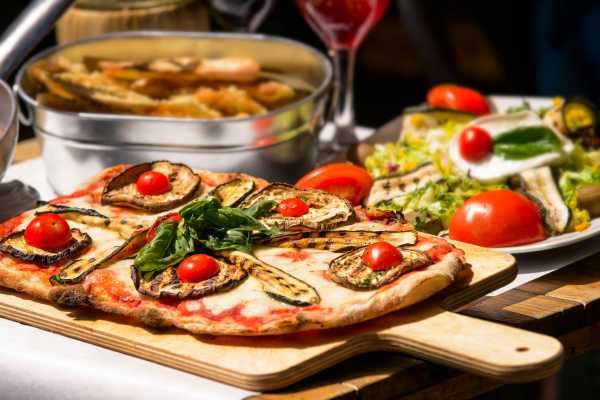Italian cuisine is renowned worldwide for its delicious flavors, rich history, and cultural significance. For Italian citizens, food is more than just sustenance; it is a vital part of their heritage and daily life. From family gatherings to local festivals, food plays a central role in shaping Italian culture and identity. In this article, we will explore the cultural significance of food for Italian citizens, delving into traditional dishes, regional diversity, and the social and communal aspects that make Italian cuisine so special.
The Foundations of Italian Cuisine
The Philosophy of Italian Cooking
The philosophy of Italian cooking revolves around simplicity, quality, and tradition. Italian cuisine emphasizes the use of fresh, seasonal ingredients, often sourced locally. This approach ensures that the natural flavors of the ingredients shine through in every dish. The concept of “cucina povera,” or peasant cooking, underscores the importance of making the most of available resources, turning simple ingredients into extraordinary meals.
Regional Diversity
Italy’s diverse geography and history have given rise to a wide variety of regional cuisines. Each region has its own unique ingredients, cooking techniques, and traditional dishes. Understanding this regional diversity is key to appreciating the full spectrum of Italian culinary traditions.
Northern Italy: Rich and Creamy
Northern Italian cuisine is characterized by its use of dairy products, meats, and rice. Dishes like Risotto alla Milanese, Polenta, and Ossobuco reflect the rich and hearty flavors of the region. The use of butter, cream, and cheese is prevalent, creating indulgent and satisfying meals.
Central Italy: Rustic and Robust
Central Italy, including Tuscany and Umbria, is known for its rustic and robust flavors. Bistecca alla Fiorentina, Ribollita, and Panzanella are classic dishes that highlight the region’s love for simple, yet flavorful, ingredients. The use of olive oil, garlic, and fresh herbs is prominent, adding depth and richness to the cuisine.
Southern Italy: Fresh and Vibrant
Southern Italian cuisine is vibrant and fresh, with an emphasis on tomatoes, olive oil, and seafood. Dishes like Pasta alla Norma, Caprese Salad, and Pizza Margherita capture the essence of Mediterranean cooking. The flavors are bold and bright, reflecting the sunny climate and coastal influences.
The Social and Communal Aspect of Italian Food
Family Gatherings and Meals
For Italian citizens, food is a cornerstone of family life. Meals are often a time for family members to come together, share stories, and enjoy each other’s company. The tradition of Sunday lunch, or “pranzo della domenica,” is a cherished ritual where extended family members gather for a multi-course meal. This practice reinforces family bonds and celebrates the joy of togetherness.
Festivals and Celebrations
Italian cuisine is deeply intertwined with festivals and celebrations. Throughout the year, various regions host food festivals, known as “sagre,” dedicated to local specialties. These events are a celebration of community, tradition, and the abundance of local produce.
Sagra Festivals
Sagra festivals are local celebrations that highlight specific foods, such as truffles, chestnuts, or wine. These festivals offer a unique opportunity to taste regional specialties, connect with local traditions, and experience the communal joy of food.
National Food Festivals
Italy also hosts national food festivals that attract visitors from around the world. Events like the Fiera Internazionale del Tartufo Bianco d’Alba (Alba White Truffle Fair) and the Eurochocolate Festival in Perugia showcase the best of Italian cuisine and provide a platform for artisans and producers to display their products.
Traditional Italian Dishes
Pasta: The Heart of Italian Cuisine
Pasta is a fundamental part of Italian cuisine and comes in countless shapes and sizes. Each region has its own traditional pasta dishes that reflect local ingredients and culinary practices.
Spaghetti Carbonara
Spaghetti Carbonara is a classic Roman dish made with eggs, cheese, pancetta, and pepper. Its simplicity allows the quality of the ingredients to shine through, making it a beloved favorite.
Lasagna
Lasagna is a layered pasta dish that combines pasta sheets with rich meat sauce, béchamel, and cheese. It is a comfort food that brings families together and is often enjoyed during special occasions.
Bread and Pizza
Bread and pizza are also staples of Italian cuisine, each with its own regional variations and traditional recipes.
Focaccia
Focaccia is a flatbread from Liguria that is often flavored with olive oil, rosemary, and sea salt. It is a versatile bread that can be enjoyed on its own or as a base for various toppings.
Pizza Napoletana
Pizza Napoletana is a traditional pizza from Naples that features a thin, soft crust topped with tomatoes, mozzarella, and fresh basil. It is a symbol of Italian culinary heritage and is celebrated worldwide.
Desserts: Sweet Traditions
Italian desserts are a testament to the country’s rich culinary heritage, offering a wide array of sweets to explore and enjoy.
Tiramisu
Tiramisu is a classic dessert that combines layers of coffee-soaked ladyfingers with mascarpone cheese and cocoa. It is a beloved treat that exemplifies the balance of flavors in Italian desserts.
Cannoli
Cannoli are crispy pastry tubes filled with sweet ricotta cheese, often garnished with chocolate chips, candied fruit, or pistachios. They originate from Sicily and are a testament to the island’s rich culinary traditions.
Embracing Italian Culinary Heritage
Cooking Classes and Workshops
For new Italian citizens, participating in cooking classes and workshops is an excellent way to learn traditional recipes and cooking techniques. These classes offer hands-on experience and insight into the cultural significance of various dishes.
Sharing Recipes and Stories
Sharing recipes and stories is an integral part of Italian culinary tradition. By exchanging family recipes and cooking tips, Italian citizens preserve their heritage and pass it on to future generations.
The Role of Food in Social Integration
For immigrants and new citizens, embracing Italian cuisine can facilitate social integration and help build connections within the community. Food serves as a universal language that transcends cultural barriers and fosters mutual understanding.
The Health Benefits of Italian Cuisine
The Mediterranean Diet
Italian cuisine is a cornerstone of the Mediterranean diet, which has been linked to numerous health benefits, including reduced risk of heart disease, improved cognitive function, and overall longevity. The diet emphasizes fresh vegetables, fruits, whole grains, lean proteins, and healthy fats, promoting a balanced and nutritious way of eating.
Emphasis on Fresh Ingredients
The emphasis on fresh, seasonal ingredients in Italian cuisine ensures that meals are not only flavorful but also packed with essential nutrients. This approach to cooking promotes overall health and well-being.
Conclusion
Italian cuisine is a celebration of life, community, and tradition. For Italian citizens, food is more than just nourishment; it is a vital part of their cultural identity and heritage. From pasta to pastries, each dish tells a story of history, family, and regional pride. By embracing and preserving these culinary traditions, Italian citizens continue to honor their past while celebrating the joys of the present. Buon appetito!



